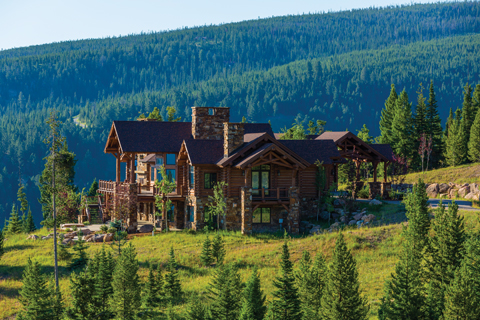Imagine your log or timber home is a canvas to showcase the natural beauty of logs. Handcrafted log homes take that beauty a step farther by showcasing the unique variations in each individual log while honoring the timeless craftsmanship that goes into the building process.
What Makes a Home Handcrafted?
In a handcrafted log home, each log has been hand peeled, notched and fitted to the log below using traditional hand tools like axes and draw knives, as well as modern tools like chainsaws and planers. “The idea is to preserve the natural characteristics of each tree,” explains Robert Lockerby, owner of Summit Log and Timber Homes in Boise, Idaho. “Elements such as branches, knots, burls, flared bottoms or root bases and curved or bent logs are used to enhance the appearance of the home.”
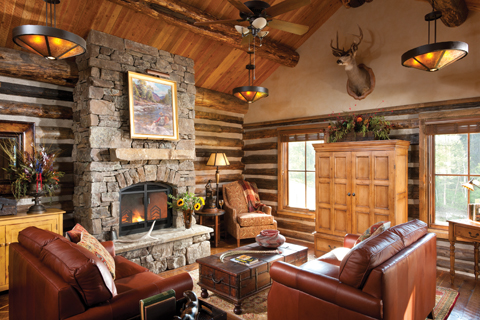
Photo by Heidi Long
In contrast with milled logs, the individual elements found in handcrafted logs lend visual interest and identity to the home. “Because each log has its own unique characteristics, two homes with identical floorplans and design will still be different,” says Brad Neu, co-owner of Montana Log Homes in Kalispell, Montana. “I think this is part of the appeal of a handcrafted log home, the uniqueness and one-of-a-kind feel.”
Stephanie Johnson, marketing manager for PrecisionCraft Log and Timber Homes, notes that handcrafted log homes often require a higher level of expertise to create than a milled log home. “The look of a handcrafted log home is more authentic to what you would think a log home would have looked like a hundred years ago,” she says.
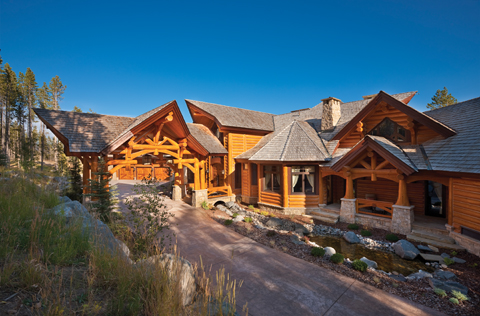
Photo by Karl Neumann
A Style for Every Taste
There are a variety of styles of handcrafted log homes, so talk to your log home producer about what they entail. One common style is called Western Chink Style, which has scribe fit corner notches with the gaps between the logs filled with chinking (an elastic acrylic sealing material). “Our ancestors used a variety of fillers such as peat moss, but today’s modern chinking is designed to be flexible as the wood shrinks and creates a tight seal for the home,” says Johnson.
Full-scribe homes scribe-fit each log along its entire length to fit precisely to the log below it, with the corner notches also scribe fitted, so there’s no need for chinking. “Full-scribe is much more labor-intensive and results in a structurally superior product because the logs make contact for their entire length,” says Jim Bachofner, co-owner of Montana Log Homes, noting that the vast majority of his company’s clients choose the full-scribe construction style.
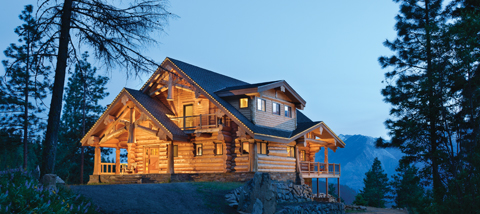
Photo by Heidi Long
You’ll also find Log Post and Beam handcrafted log homes. This term refers to a home built similar to a timber frame structure, using round logs in place of squared timbers for the frame. Log posts on the main floor support upper log floor joists, beams, and roof purlins, while conventional framing materials or structural insulated panels (SIPs) fill in between the posts. “Exterior walls are often covered with a wood siding or stucco,” says Lockerby, adding that the use of natural or cultured stone accents can help add rustic beauty to the finish.
Dovetail construction makes use of either chink or full-scribe style and is characterized by a compound angled corner notch with the interior and exterior faces of the logs milled for a flat surface. “This style seems to be more popular in the Northeast and with people who want the log home look without the round surfaces, which can be challenging to hang a picture on,” says Neu.
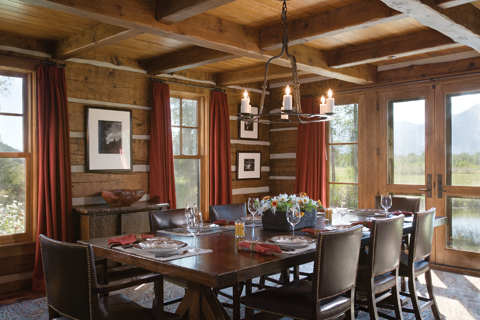
Carney Logan Burke Architects/photo by Roger Wade
There are different ways to finish the logs, too. Summit Log and Timber Homes uses what they call a “Latewood” finish. “Latewood is the newest stratum in the growth ring of a tree,” explains Lockerby. “With Latewood timber, the bark and cambium layer is removed with high-pressure water. The resulting smooth log surface is visually appealing and showcases the natural beauty of the wood’s ripples, knots, burls, and bends.” This process preserves more of the logs’ unique features.
Why Choose Handcrafted?
There’s no doubt the unique look is what draws many people to a handcrafted log home. “A handcrafted home imparts a feel that can’t be duplicated in a home where the logs have been turned on a lathe or milled square with a saw,” says Bachofner. “The unique character of the natural logs is lost in the process of machining each log to be identical in shape.” “Most customers who want a handcrafted log home are drawn to the timeless look they offer, like that of the world famous Old Faithful Lodge in Yellowstone National Park,” says Scott Youngstrom of Yellowstone Log Homes in Rigby, Idaho. “These are typically the most labor intensive log home style, yet they are also the most unique because each log is different than any other log in the home.”
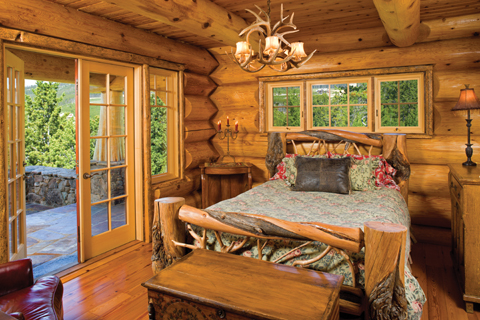
Maple Island Log Homes/photo by Roger Wade
But the benefits of a handcrafted log home go beyond aesthetics. “Handcrafted log homes tend to use larger diameter logs, since they are not constrained by the size of a manufacturing line,” says Johnson. “The larger the log, the greater the capacity for energy efficiency.”
Don’t let cost dissuade you. When the final cost is tallied, you’ll spend approximately 20 percent more for a handcrafted home than you would for a comparable milled log home. While the logs for a handcrafted home will be more—due in part to the larger size of the logs and the labor involved in crafting them to your home’s design—the actual construction is simpler and less costly. “Because handcrafted log homes are preassembled at the log company’s facility they reassemble quickly,” says Youngstrom. “An average log package can be reassembled on the customer’s job site in less than a week.”
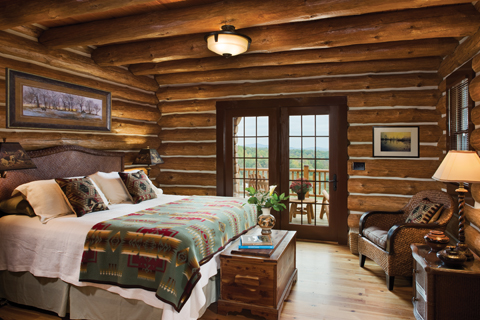
Photo by Karl Neumann
Maintaining a Handcrafted Log Home
The maintenance requirements of a handcrafted log home are not necessarily any different from a home built of milled logs; both types require a good wood preservative, which should last as long as paint on a conventional home. “The important thing is to use common sense design features to protect the logs,” says Lockerby. “We know this is a generational home so we want to be sure our houses are built to last.”
Bachofner agrees, adding that the best course of action is to consult with your log home producer to determine maintenance requirements for any home. “We work with clients to design with an eye toward ease of maintenance, with the use of porches and longer eaves to protect their homes from the elements,” he says.
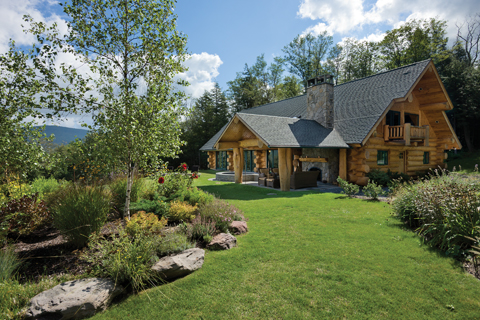
Brainard Ridge Associates/photo by Roger Wade
The craftsmen who create handcrafted log homes, understandably, take great pride in their work. “Scribing and notching natural logs together is a craft and the result of the craftsmen’s effort is not just a home, it is a work of art,” says Neu. By choosing a handcrafted log home, you’re opening the door to the kind of natural beauty that can only be found in a log or timber frame home—one that’s uniquely yours.

